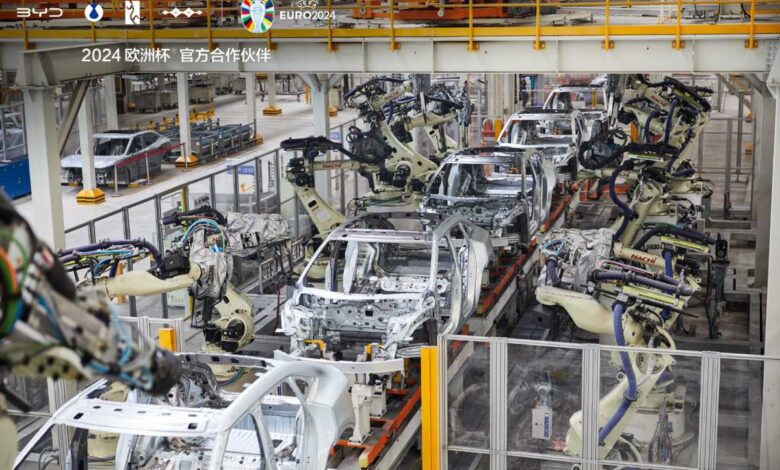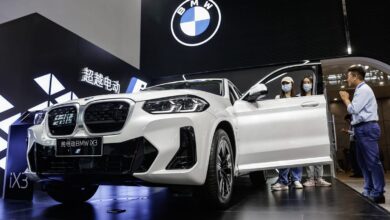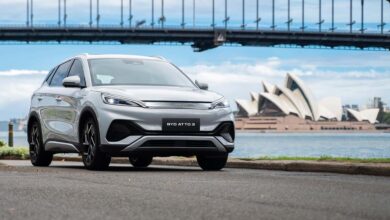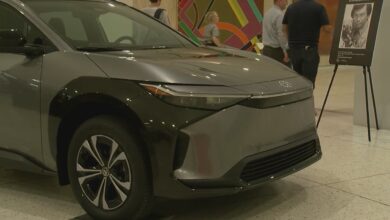China has won the EV war, and US car makers are changing their electric plans

It looks like we have a winner. China, as it has done with solar panels, wind turbines, and even battery storage, not to mention battery metals, has already been declared the winner of the electric vehicle manufacturing wars. And the realisation is having a big impact on what companies like Ford, GM and even Tesla do next.
“We believe that Western auto firms (including Tesla) have come to a unanimous and simultaneous realization: China has won the contest for EV supremacy,” writes the Morgan Stanley auto analyst Adam Jonas in a new note to clients.
“From this point, the industry is likely to enter a new phase of capex spend (lower), protectionism (higher) and cooperation with China (eventual).”
By that he means the following. The big car makers, particularly GM and Ford, are the most likely to surrender any deep designs they had on becoming leaders in the EV sector.
US and European car makers have shown that they can make very nice electric vehicles, but none of them are cheap – and at the lower end of the market, none of them can match the price of the petrol and diesel equivalents. Chinese car makers such as BYD and MG are the exception.
Ford, for instance, has already announced a winding back of its capex plans (by half a billion US dollars) and in its latest quarterly report revealed that it had lost $US1.3 billion in the first quarter, from the sale of just 10,000 EVs. That translates to a loss of $US130,000, or $A200,000, per electric car sold.
Analysts such as Jonas believe that Ford and GE may end up with an EV share of sales of just five per cent by the end of the decade, as they choose to cash in on the US consumer obsession big cars, the constant carping about EVs in mainstream media, and a clear current preference for hybrids. And they are happy with that because it means bigger profits.
Even Tesla is having a rethink. Analysts have been trying to make sense about the confusing array of announcements in the last few weeks that have included a massive downsizing of its global staff, the dumping of its Supercharger team and the slowing down of new facilities, and questions about whether Tesla will ever produce its long awaited “Tesla 2” $US25,000 car.
Many suspect that Tesla is focusing on AI and robot-taxis as its long term play, and deals with existing car makers and subscriptions services, as well as credits, in the short term.
The market shares of EVs in all the big markets make for interesting reading. Despite a jump in March sales, the market share in the US remains stalled at 6.5 per cent. In Europe, it has slipped to 15.5 per cent, while in China it has jumped to more than 22 per cent.
Ford, for instance, has already set aside $US700 million ($US1.07 billion) on EV “credits” that it will need to buy to meet the expected shortfall in its vehicle emissions targets. It may just ramp up that budget significantly rather than lose more on EVs that the US consumer does not want.
The question for many is what happens next. Protectionism is likely to be a focus for the next few years, but BYD and others are looking to get around that by building factories in Europe, and Mexico.
But, says Jonas, for EVs to develop in Western markets, deals with China-based technologies and supply chains will be critical. Which might go a long way to explain why Tesla CEO Elon Musk made his unexpected visit to China late last month. It was about a lot more than mapping.
Giles Parkinson is founder and editor of The Driven, and also edits and founded the Renew Economy and One Step Off The Grid web sites. He has been a journalist for nearly 40 years, is a former business and deputy editor of the Australian Financial Review, and owns a Tesla Model 3.



